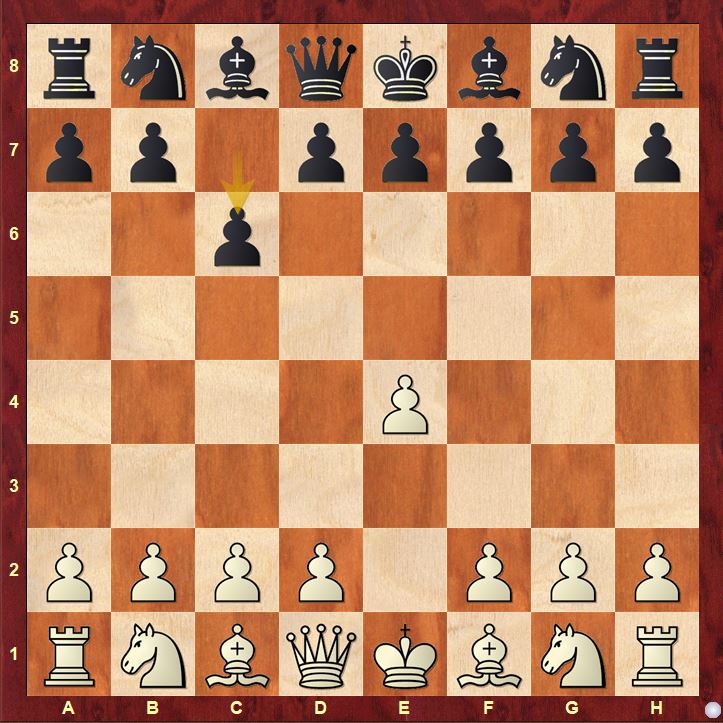The Caro-Kann Defense is a popular opening played by Black in response to 1.e4. From White's perspective, it is important to understand the key ideas and typical pawn structures that arise in the Caro-Kann Defense in order to formulate a solid and effective plan. One of the key goals for White in the Caro-Kann is to try and control the center of the board and create space for their pieces. This can be done through moves such as d4, followed by the development of the light-squared bishop and knight.
Another important aspect to consider is the pawn structure that arises in the Caro-Kann. The pawn structure typically features a pawn on d5, supported by Black's dark-squared bishop. This can limit the mobility of White's pieces, so it is important to consider ways to challenge Black's pawn on d5 and potentially create weaknesses in Black's position. When considering which response to play against the Caro-Kann, White has a number of options, including the Advance Variation, the Exchange Variation, and the Panov-Botvinnik Attack. Each of these responses has its own strengths and weaknesses, and White must carefully consider which is best for a given position.
The Caro-Kann Defense is a solid and flexible opening that begins with the moves 1.e4 c6. As White, there are several popular responses to the Caro-Kann, including the Advance Variation, the Exchange Variation, and the Panov-Botvinnik Attack. Let's take a closer look at each of these responses:
Advance Variation: The Advance Variation is one of the sharpest responses to the Caro-Kann, and is characterized by the moves 1.e4 c6 2.d4 d5 2.e5. In this variation, White aims to control the center of the board and put pressure on Black's pawn on d5. Black has a number of different responses to the Advance Variation, including playing c5, which can lead to a lively and tactical struggle.
Exchange Variation: The Exchange Variation is a more solid and positional response to the Caro-Kann, and is characterized by the moves 1.e4 c6 2.d4 d5 3.Nd2. In this variation, White aims to trade off Black's dark-squared bishop, which is a key piece for Black in the Caro-Kann. By exchanging bishops, White can gain a more favorable pawn structure and potentially create weaknesses in Black's position.
Panov-Botvinnik Attack: The Panov-Botvinnik Attack is a aggressive and tactical response to the Caro-Kann, and is characterized by the moves 1.e4 c6 2.c4 d5 3.cxd5 Nf6 4.d4. In this variation, White aims to quickly open up the center of the board and create space for their pieces. Black must be careful to defend their position and avoid falling into any tactical traps set by White.
Panov says "In the Caro-Kann, it's important to keep an eye on the d5-square. If you can control that square, you can often gain an advantage."
Each of these responses to the Caro-Kann Defense has its own strengths and weaknesses, and the best response will depend on a number of factors, including the skill level of the players, the position of the pieces on the board, and individual playing style. By familiarizing yourself with these responses, you can gain a deeper understanding of the Caro-Kann Defense and develop a plan to successfully navigate it as White.
If you're looking to improve your understanding of the Caro-Kann Defense from White's perspective, consider reaching out to Amith's Chess Coaching Classes. With their expert guidance and training, you can gain a deeper understanding of this popular opening and develop the skills necessary to successfully navigate it as White. Whether you're a beginner or an experienced player, Amith's Coaching Classes can help you take your chess game to the next level.






Comments